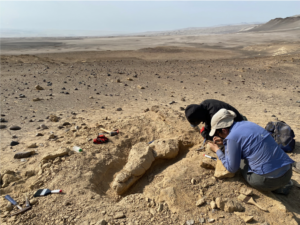The berry of Physalis peruviana L. (Solanaceae) represents an important socio-economical commodity for Latin America. The absence of a clear phenotype renders it difficult to trace its place of origin. In this study, Cape gooseberries from eight different regions within the Peruvian Andes were profiled for their metabolism implementing a NMR platform. Twenty-four compounds could be unequivocally identified and sixteen quantified. One-way ANOVA and post-hoc Tukey test revealed that all of the quantified metabolites changed significantly among regions: Bambamarca I showed the most accumulated significant differences. The coefficient of variation demonstrated high phenotypic plasticity for amino acids, while sugars displayed low phenotypic plasticity. Correlation analysis highlighted the closely coordinated behavior of the amino acid profile. Finally, PLS-DA revealed a clear separation among the regions based on their metabolic profiles, accentuating the discriminatory capacity of NMR in establishing significant phytochemical differences between producing regions of the fruit of P. peruviana L.



